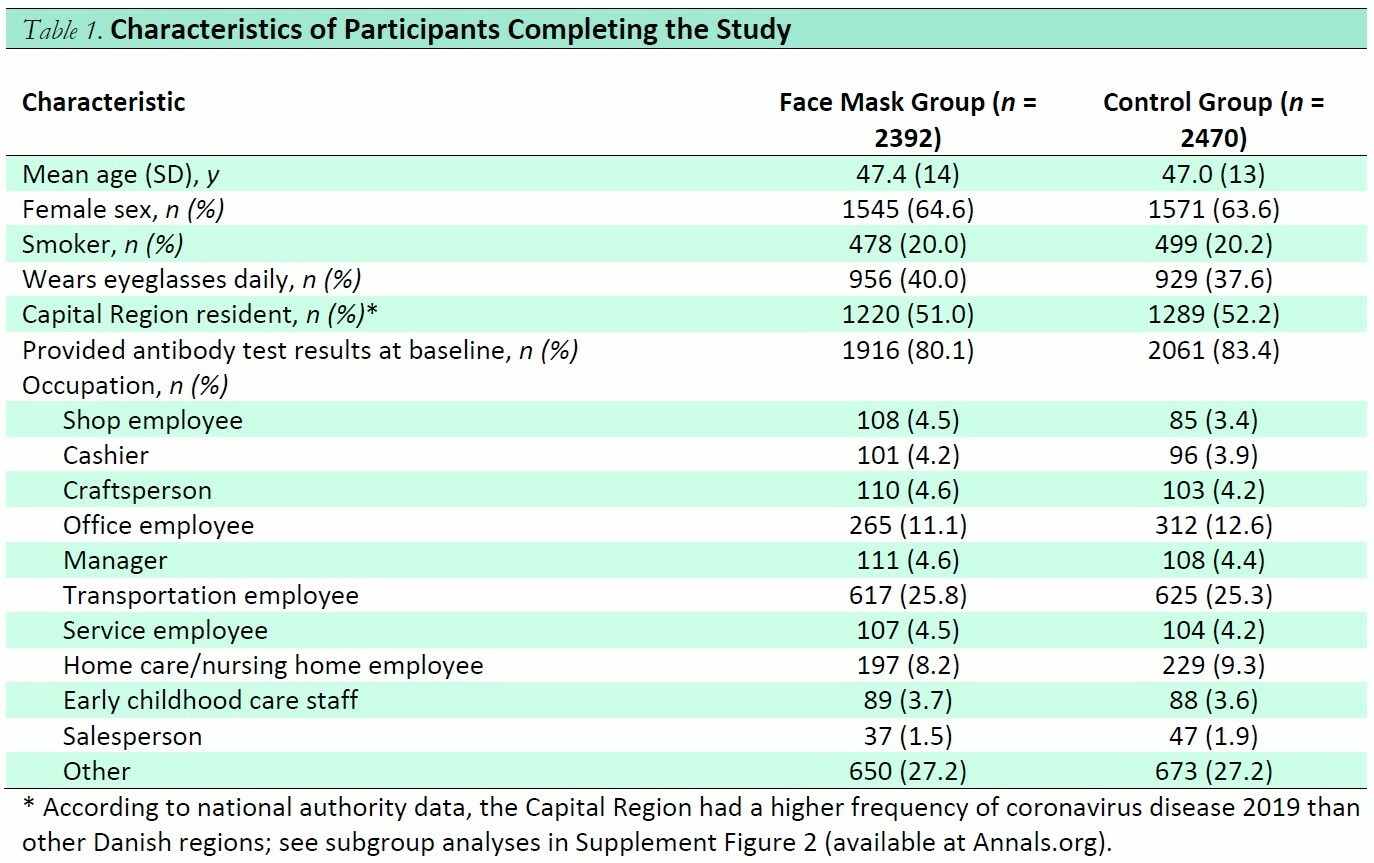Medical masks were NOT effective protection against coronavirus infection in the largest randomized controlled trial to date with 6,024 people, new Danish study published in Annals of Internal Medicine shows

In the largest randomized controlled trial to date with 6,024 subjects, medical masks were NOT effective protection against infection, according to a Danish mask study that was just published in Annals of Internal Medicine. The purpose of the study was to assess whether masks are protective and not to assess source control. JAMA, NEJM, and Lancet have all refused to publish the same study.
The controversy over the effectiveness of masks has been going on since the coronavirus outbreak in January of this year. As part of the study, a total of 17 258 Danish citizens responded to recruitment, and 6024 completed the baseline survey and fulfilled eligibility criteria.
The first participants (group 1; n = 2995) were randomly assigned on 12 April 2020 and were followed from 14 to 16 April through 15 May 2020. The remaining participants (group 2; n = 3029) were randomly assigned on 24 April 2020 and were followed from 2 to 4 May through 2 June 2020.
A total of 3030 participants were randomly assigned to the recommendation to wear face masks, and 2994 were assigned not to wear face masks; 4862 participants (80.7%) completed the study. Table 1 shows baseline characteristics, which were well balanced between groups. Participants reported having spent a median of 4.5 hours per day outside the home.
At the end of the study, the results of the study suggest that:
“The recommendation to wear a surgical mask when outside the home among others did not reduce, at conventional levels of statistical significance, the incidence of SARS-CoV-2 infection in mask wearers in a setting where social distancing and other public health measures were in effect, mask recommendations were not among those measures, and community use of masks was uncommon.”
The research team also cautioned that “the findings were inconclusive and cannot definitively exclude a 46% reduction to a 23% increase in infection of mask wearers in such a setting. It is important to emphasize that this trial did not address the effects of masks as source control or as protection in settings where social distancing and other public health measures are not in effect.”
As part of their study, the team also found that reduction in the release of virus from infected persons into the environment may be the mechanism for mitigation of transmission in communities where mask use is common or mandated, as noted in observational studies. “Thus, these findings do not provide data on the effectiveness of widespread mask-wearing in the community in reducing SARS-CoV-2 infections,” the team concluded.
Below are the characteristics of the study participants.


